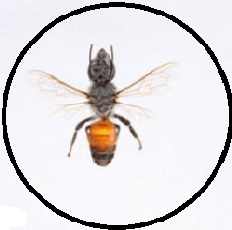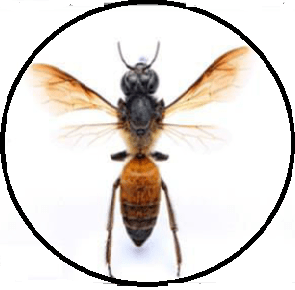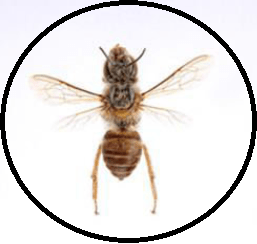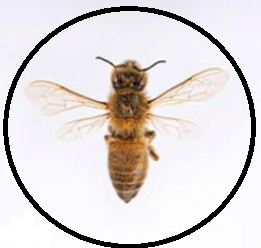Introduction
It is estimated that there are approximately 30,000 different species of bees in the world, and roughly half of them have been recorded by entomologists so far. The majority of bees are solitary creatures, meaning that each female bee builds her own nest, lays a single egg, and provides food for the lone larva that develops. However, a few species display a high level of social development and live together in a permanent, large colony with a single egg-laying queen at the helm.
While many bee species collect nectar and convert it to honey as a food source, only these social species that form large colonies store significant quantities of honey.
Out of the 30,000 species, only a fraction, i.e., around 30 are exploited by humans for honey production, namely honeybees and stingless bees, which have been used by humans for thousands of years as a source of sweetening. Although there are a few rare instances of bumblebees being used for honey production as well.
It’s worth noting that the vast majority of bee species are crucial plant pollinators that are vital for maintaining biodiversity, and some of these species are managed commercially for this purpose.
Classification of Honey Bees – Michener’s Taxonomy
According to Michener’s taxonomy , all bee species fall into seven main families, one of which is the Apidae family. Apidae is divided into three subfamilies:
- Xylocopinae
- Nomadinae
- Apinae
The subfamily Apinae consists of nineteen tribes, including Apini (honeybees), Meliponini (which includes stingless bees), and Bombini (which includes bumblebees). The Apini tribe has only one genus, Apis, which represents the true honeybees.
Honeybees are social insects that create permanent colonies. It is their social behavior of storing significant quantities of honey for the colony to survive during dearth periods that have led them to be exploited by human societies for thousands of years as a source of honey.
| Kingdom | Animalia | Animals |
| Phylum | Arthropoda | Jointed legs |
| Class | Insecta | They have jointed legs, compound eyes, antennae, exoskeletons, and three-part bodies-Head, thorax, abdomen |
| Order | Hymenoptera | “Membrane winged”. This order includes bees, ants, wasps, and sawflies. |
| Super family | Apoidea | The bees |
| Family | Apidae | Honey and stingless bees |
| Sub family | Apinae | Perennial social colonies |
| Genus | Apis | Hive bee |
| Species | Mellifera L., | Honey bearing |
Species of Honeybee
Although beekeeping journals typically mention only four species of honeybees, namely Apis mellifera, Apis cerana, Apis florea, and Apis dorsata , recent studies have identified the existence of several additional honeybee species. In the past few years, several new honeybee species have been discovered, and Michener’s taxonomy recognizes eleven species in the Apis genus. They are:
Apis andreniformis (from China)
Apis binghami (from Sulawesi)
Apis breviligula (from Philippines)
Apis cerana (from Afghanistan, Japan, Russia, China and southern Indonesia)
Apis dorsata (from Afghanistan, Indonesia)
Apis florea (from Oman, Indonesia and Phillipines)
Apis koschevnikovi (from Malaysia)
Apis laboriosa (from Bhutan, Yunnan and Nepal)
Apis mellifera (from Africa, Europe and Middle East)
Apis nigrocincta (from Indonesia)
Apis nuluensis (from Malaysia, Indonesia)
These eleven species of honeybees exhibit two distinct nesting behaviors, which determine their tolerance for being kept in a man-made hive. Certain species create nests with parallel combs, while others use a single comb. Species that construct nests with parallel combs typically inhabit cavities, making them adaptable to man-made containers and allowing them to be kept and managed inside hives.
Honeybee species whose nests consist of multiple combs
(cavity nesting honeybees)
Apis cerana
Apis koschevnikovi
Apis mellifera
Apis nigrocincta
Apis nuluensis
Honeybee species whose nests are single combs
Apis andreniformis
Apis binghami
Apis breviligula
Apis dorsata
Apis florea
Apis laboriosa
Four most commonly found species of honey bees are Apis florea, A. cerana indica, A. dorsata and A.laboriosa.

Apis florea : The Apis florea, commonly known as the Dwarf Honey Bee, is the smallest of all honeybees and is often confused with stingless bees due to their reluctance to sting. They thrive in hot and arid climates and are primarily found in flatlands and sub-tropical regions. Their combs are unique in that they display a honey portion at the top. These bees typically construct their nests in compact trees with dense foliage or in closely-spaced plant stalks such as those found in jowar or rice fields.

Apis dorsata : The Apis dorsata, also known as the Rock Bee, constructs its nests in open spaces and requires external support such as a tree branch or rock cliff. The name “rock bee” is derived from this characteristic. These bees build the largest hives among honeybees, with some measuring up to 200 cm by 150 cm in size. The hives are semi-circular in shape and hang from a higher point. They are known to forage during moonlit nights. Forest honey hunting, a common practice, often involves the harvesting of honey from rock bees.

Apis cerana : The Apis cerana, is also known as the Asian hive bee. Indigenous to Asia, it can be found across a vast area spanning from Afghanistan to Japan, and from Russia and China in the north to southern Indonesia. Apis cerana constructs a nest using parallel combs, similar in style to Apis mellifera, within a cavity. Its size varies across its range, with tropical races being smaller and having smaller colonies. Due to its broad geographic distribution, Apis cerana comprises many different races, reflecting the diverse habitats it occupies, ranging from temperate mountainous regions to tropical islands.

Apis mellifera : The Apis mellifera is also known as the hive bee, European bee, or Western hive bee, or occidental honeybee. Indigenous to Africa, Europe, and the Middle East, it has been introduced to the Americas, Australia, and many other regions of the world. The largest honey industries in the world, such as those in Argentina, China, and Mexico, are based on the introduced Apis mellifera honeybee. Apis mellifera comprises many different races, some of which are tropical and others temperate, and they vary in the size of both individual bees and colonies. In general, Apis mellifera is considered a medium-sized honeybee against which other species are evaluated as “large” or “small”. Apis mellifera constructs its nest inside an enclosed space, typically consisting of a series of parallel combs.
The Apis mellifera is a popular choice for honey bee farming worldwide due to several reasons:
- It displays a gentle temperament.
- It tends to swarm less frequently.
- The queen is known to lay eggs prolifically.
- It is an excellent collector of honey.
- It can defend itself and its hive from predators, with the exception of wasps.
- It readily adapts to frame hives.
Characteristics of these four species of honey bees are given in the following table :
| Characteristics | Apis dorsata | Apis florea | Apis cerana | Apis mellifera |
| Nesting | Open nesting. Builds single large comb (area ~ 1m2) attached to branches of trees or rocks etc. | Open nesting. Builds single small comb (area~ size of palm of hand) fixed to branches of bushes. | Cavity nesting. Builds many parallel combs in cavities of tree trunks, hollows of rocks, poles and other covered places | Cavity nesting and similar in habits to Apis cerana and builds parallel combs. |
| Size | Biggest honey bee (16-18mm) | Smallest Apis bee (9-10mm) | Medium size (14-15mm) | Medium size (14-16mm) |
| Swarming/ Absconding | Strong tendency | Strong tendency | Strong tendency | Only in African sub species |
| Temperament | Furious | Mild | Furious | Gentle except African sub species |
| Average honey yield per colony/year | 40 kg (wild bees; cannot be domesticated) | 500 g (wild bees; cannot be domesticated) | 5 kg (Hive bees; can be domesticated) | 15 kg Hive bees; can be domesticated) |
| Method of honey extraction | By squeezing (unhygienic) | By squeezing (unhygienic) | By centrifugal honey extractor from the hived bees (hygienic). | By centrifugal honey extractor from the hived bees (hygienic). |
| Number of cells/10cm comb (worker cells) | 18-19 | 32-36 | 21-25 | 17-19 |
Species and Subspecies of Hive Bees
It is crucial to distinguish between species and subspecies. Species are incapable of interbreeding with each other and are reproductively isolated, whereas subspecies are separated by geographical barriers but can interbreed.
The two domestic bee species, viz, Apis cerana and Apis mellifera have multiple subspecies in different regions of the world. For example, in India, Apis cerana has three subspecies:
1. A. cerana cerana in Himachal Pradesh and Jammu and Kashmir (North India)
2. A. cerana indica in Kerala, Tamilnadu, and Karnataka (South India)
3. A. cerana himalaya in Nagaland, Manipur, Mizoram, Assam, and Meghalaya (Eastern parts of India).
In addition to these three subspecies, A. cerana japonica has been identified in Japan.
Apis mellifera is divided into many subspecies which can be grouped into three categories: Eastern, European, and African. The Eastern subspecies include :
- A. mellifera remipes found in Iran
- A. mellifera syriaca found in Syria, Israel, and Lebanon.
However, these subspecies are not suitable for modern beekeeping.
The European subspecies consist of :
- A. mellifera mellifera (Dark Dutch or German bee).
- A. mellifera carnica (Carniolan bee found in southern Austria).
- A. mellifera ligustica (Italian bee found in Italy).
- A. mellifera caucasica (Caucasican bee found in the USSR).
The African subspecies include:
- A. mellifera intermissa (Tellian bee found in Morocco and Libya).
- A. mellifera lamarckii (Egyptian bee restricted to the Nile Valley).
- A. mellifera capensis (Cape bee, the only bee that can rear a queen from eggs laid by workers).
- A. mellifera adansonii (African bee, also known as the killer bee).
Negative Impacts of the Introduction of Exotic Bee Species
Beekeepers have long been fascinated by the bees in other countries, often considering them more productive, gentler, and less prone to diseases and swarming than the bees in their own countries. This way of thinking has caused disasters in recent years as races of bees, diseases, and parasites have been spread around the world by the movement of honeybee colonies, resulting in serious consequences for the beekeeping industry and indigenous bee populations in many countries.
For example, the Varroa destructor mite is a natural parasite of Asian honeybees, but when introduced to European Apis mellifera honeybees, it can kill the entire colony unless action is taken by the beekeeper. This mite has now been introduced to many beekeeping countries, and most populations of wild honeybees throughout Europe have been killed in the past few decades.
Similarly, the small hive beetle, Aethina tumida, has been spread from Africa to the USA, where it leads to the destruction of European honeybee colonies. The introduction of African bees to South America was initially viewed as a disaster, as they quickly replaced existing populations of European honeybees that were less suited to the tropical environment. However, today some view this event in a more sympathetic light, as beekeeping industries have learned to adapt to the African bees.
It is important to note that honeybees and used beekeeping equipment should never be moved from one area to another without expert consideration of the consequences. Only a few regions remain without introduced honeybee diseases, mainly in developing countries, and it would be highly beneficial for them to retain their stocks of disease-free honeybees. This may allow for the future marketing of disease-free stocks, exporting of disease-free queen bees, and make organic honey and beeswax production cheaper and easier.
